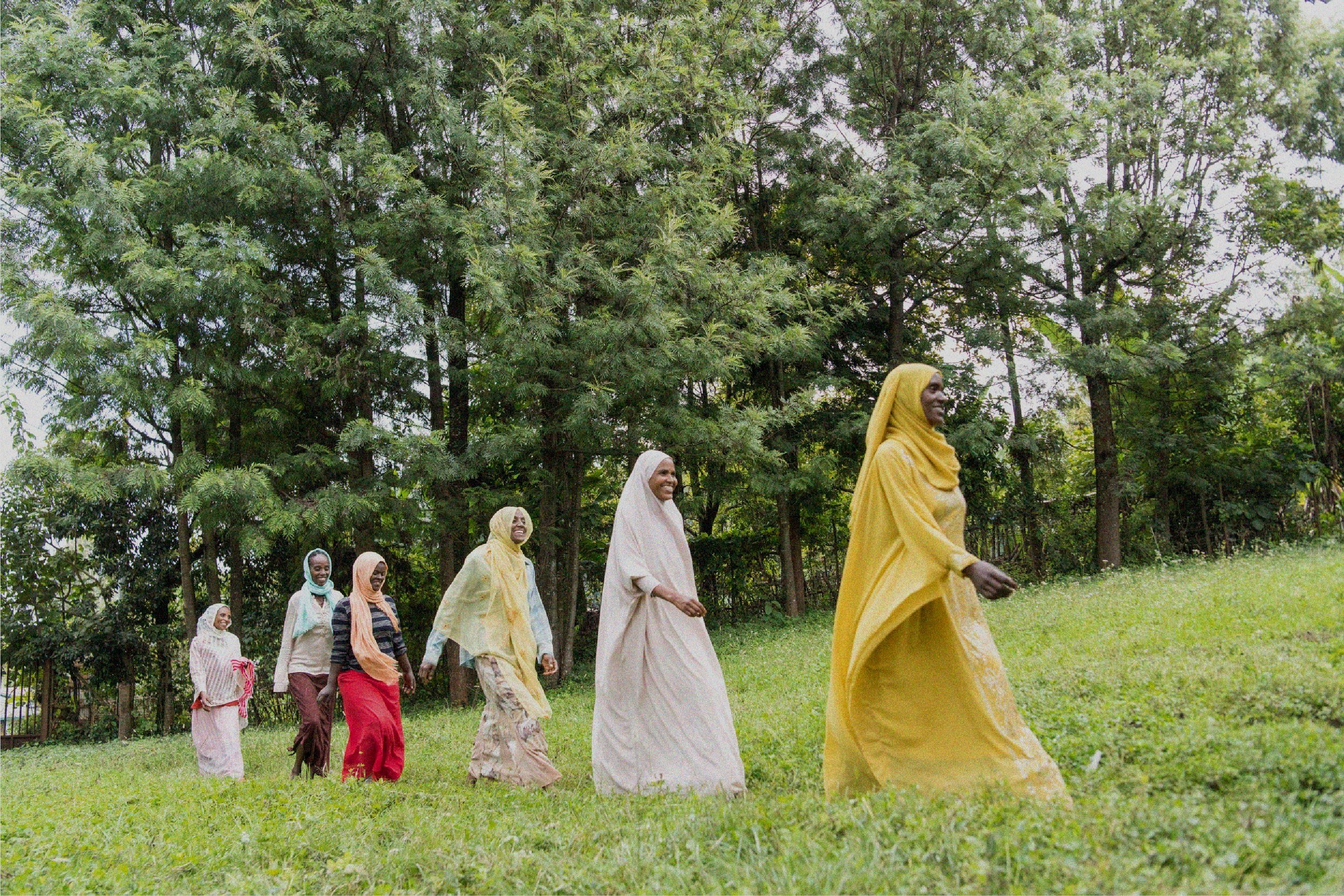
Explore Impacts

Examples of Climate Change Impacts on Sexual and Reproductive Health and Rights
Overview of Selected Impacts of Climate Change on SRHR
-
01. Displacement and Migration
Location: Global
Since 2011, an estimated 11.5 million women have experienced disruptions in their access to contraception, due to climate-related displacement, based on MSI Reproductive Choices’ data from 26 climate-impacted countries.
Location: Bangladesh
Women from households that had been displaced three or more times were less likely than those from non-displaced households to have received an antenatal care visit, according to a cross-sectional household survey conducted in 25 rural villages in Bangladesh.
02. Flooding
Location: Chama District, Zambia and Kwazulu Natal, South Africa
Floods in rainy seasons destroy road infrastructure, including bridges, leaving many healthcare facilities isolated from the district health office where essential drugs, including sexual reproductive health commodities, are housed. Consequently, women and girls have limited access to SRH services such as contraceptives and safe abortion services. They are forced to resort to unsafe methods, leading to an increase in unplanned pregnancies and unsafe abortions rates.
Source: Ipas Africa Southern Region (case study entry)
Location: Bangladesh
In Bangladesh, a study of 3,360 rural women from coastal communities who are vulnerable to flood and disaster reported that cyclone shelters did not take into account their SRH needs. Sanitary pads and contraceptives are not included in the disaster relief packages—and SRH services were not available for women experiencing gynecological problems and pregnancy complications.
Location: Pakistan
After the floods in the Sindh region in Pakistan, due to cultural norms, women were not allowed to leave temporary shelters to seek health services unless accompanied by a male relative, which, in turn, increased their difficulty in freely and independently accessing sexual and reproductive health (SRH) services such as contraception.
03. Extreme Weather Events
Location: Bangladesh
After Cyclone Bulbul in Bangladesh in 2019, women reported severe disruption to contraceptive use due to the destruction of clinics and contraceptive products, according to a qualitative research study. Moreover, cyclone centers meant to provide refuge unintentionally placed young women at greater risk for rape due to crowded conditions and lack of gender-disaggregated spaces for washing. The combination of interrupted contraceptive use and lack of safe spaces placed women at severe risk for unintended pregnancies.
Location: Nepal
During climate disasters such as floods, hurricanes, and landslides, condoms and pills are often not considered a priority. This leads to unintended pregnancies and unsafe abortions. In addition, there are no safe abortion services available in any of the affected districts, causing women and girls to resort to dangerous methods such as herbal remedies or homemade chemical concoctions, which can result in severe illness and death.
Source: Expert interview
Location: Nicaragua
After Hurricane Mitch, a study found that women of reproductive age in hurricane-impacted areas were 200% more likely to give birth than those in other areas. Source: Davis 2017
-
01. Drought
Location: Lesotho
During a drought in Lesotho, adolescents living in rural areas had higher HIV prevalence, earlier sexual debut, and lower educational attainment than those not aected by drought, and migration was associated with a two-fold increase in HIV odds among young people (Low et al. 2019).
Location: Malawi
A study in Malawi found that, amongst women employed in agriculture, a six-months drought doubles their likelihood of engaging in transactional sex compared to women who were not affected by the drought and increases their likelihood of having sexually transmitted infections by 48% in the past twelve months. The effect was especially observed among women who lacked formal education.
02. Expansion of disease vector range
Location: Brazil
Due to increasing surface temperatures and humidity, climate change is expanding the viable ranges of disease vectors such as mosquitos. This is increasing the spread of vector-borne illnesses such as malaria, dengue fever, and Zika virus, which are linked to worse maternal and neonatal outcomes. Vector-borne diseases increase the risk of spontaneous abortion, premature delivery, stillbirth, and low-weight births. For example, between October 2015 and January 2016, Brazil reported 1.5 million people were infected with the Zika virus and more than 3,500 babies were born with smaller heads than normal—a condition known as microcephaly.
-
01. Changes in rainfall pattern
Location: Malawi
Changes in rainfall patterns affect water levels in rivers and lakes where fish breed resulting in reduced fish populations and smaller fish sizes, making it harder for fishing communities to catch enough fish to sustain themselves during the lean season. In Malawi's lakeshore districts, the majority of fish buyers are impoverished women, who are often subjected to sexual exploitation. Fishermen often refuse to sell fish to women unless they engage in transactional sex, forcing many women to enter into these arrangements to secure a regular supply of fish at lower prices.
Location: Kenya
In Kenya, climate change has increased precipitation during the rainy season and raised temperatures during the dry season, resulting in floods and droughts. For 75% of Kenyans, agricultural activities are their primary source of income. A study used data from the Kenyan Demographic and Health Survey to track intimate partner violence (IPV) severity from 2008-2014. They complemented this data with Emergency Events Database data along with GPS coordinates to identify severe flooding events, defined as any flood >10 days, by county in Kenya. Overall, women were more likely to experience IPV if their spouse worked in agriculture. There was a 60% increase in the odds of reporting IPV in counties that experienced a severe flood as compared to counties that did not experience one.
02. Extreme weather events
Location: Brazil
After Tropical Cyclone Ida hit in March 2019, several cases were documented of exploitation and sexual abuse perpetrated by local leaders charged with storing and delivering food supplies to those in need of assistance. Local leaders charged people money to include their names on food distribution lists. Women who did not have money were coerced and forced into sex in exchange for food supplies.
03. Drought
Location: Ethiopia
In Ethiopia, drought has resulted in families engaging in female genital mutilation (FGM) and child marriage of young girls as a means of receiving dowries of cash and livestock. Child marriage increased by an average of 119% across regions worst hit by the drought – Somali; Oromia; and Southern Nations, Nationalities, and Peoples’ Region (SNNP) between January and April 2021 and the same period in 2022. Within the same time frame, cases of FGM in SNNP region increased by 27%.
Location: Peru
A study using data from the Demographic and Health Surveys over the period 2005-2014 found that the prevalence of women’s experience of physical intimate partner violence increased by 65% following drought during the cropping season.
Location: Nepal
In Nepal, 73% of women ages 18-49 living in arid areas with frequent droughts were married before the age of 18, as compared to 41% of women living in more humid locations in Nepal. Child marriage in Nepal is often used as a coping mechanism to manage lower agricultural yields, ecosystem productivity losses, higher food prices and economic pressures during dry periods. In such circumstances, parents often resort to giving away their children for dowry in order to supplement their family income.
-
01. Rising sea level
Location: Bangladesh
In coastal Bangladesh, rising sea level causes salty water to seep into the groundwater deep underground and contaminate clean drinking water. A study published in 2018 found that 20 million people in coastal areas of Bangladesh are affected by increased salinity in drinking water, which has exponentially increased in recent years due to increasing temperatures and population growth. Excess salinity in drinking water can cause sodium intake levels to spike, which increases blood pressure and has been linked to higher risks of hypertension and preeclampsia in pregnant women.
02. Extreme heat
Location: Ghana
An analysis of four selected regions found that for each degree increase in maternal heat exposure, the odds of experiencing miscarriage or stillbirth increased by 27% to 42%.
Location: Israel
A cohort study conducted in Be'er Sheva, Israel found that an exposure to higher temperature (elevation of one interquartile range (≈9.0°) of the mean daily temperature) during the second or third trimester of pregnancy was associated with an increased risk of developing preeclampsia.
03. Climate-associated food insecurity
Location: Uganda
The impacts of climate change, including increased sunshine, heat, extended drought, and unpredictable seasons, have detrimental effects on agriculture. These effects manifest as unstable crop yields, increased crop failure, and challenges in agricultural work, ultimately resulting in food insecurity. Research conducted in Uganda highlights the significant risks that food insecurity poses to maternal and child health. It indicates that food insecurity leads to decreased maternal energy and reduced infant birth weight, with Indigenous women experiencing more severe effects.
04. Flooding
Location: Thailand
Pregnant women who were displaced due to flooding delivered infants with significantly lower birth weights than infants born to women who were not displaced by a natural disaster.
Amoru AIDS Support Community Initiative
Humble
Tulilumwi makambako organization (TUMO)
Divine Academy
RAWSA (Regional Advocacy for Women's Sustainable Advancement) Alliance for African and Arab States


